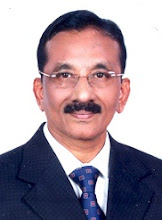
Sabarimala is a renowned pilgrim centre atop the rugged hills of the
There are two main rituals called the Mandal Puja and the Makara Sankranti Puja, which is celebrated from November to mid-January in Kerala during which time, the devotees perform austerities and penance.
The Pilgrimage
Devotees undergo rigorous penance and austere living before starting on the pilgrimage. Regardless of caste, creed and colour they wear black dhoties and carry on their heads, bundles containing traditional offerings like coconuts filled with ghee, camphor and rice.
The temple dome is covered with gold and the devotees break the coconuts before climbing the steps. Among the pilgrims, there are a few who are undertaking the pilgrimage for the first time while ther are a few who have been doing so for the past many years.
The first timers are known as 'Kanni Swamis' and the leader of the group is known as 'Guru Swami' or the lead person of a team who is incharge of all the rituals.
Devotees take a ritual bath while climbing up the hill in the holy river Pamba, which absolves one's sins. En route at Erumeli, in a supreme instance of communal harmony, they pay obeisance at the shrine of Vavar, a Muslim deity believed to be a close ally of Lord Ayyappa.
To ease the ardour of the long trek through the forests to the temple at the peak of the Sabari Hills, devotees constantly chant the name of the holy one. No women in the fertility age group are allowed into the precincts of the shrine of the Lord who is considered to be an Eternal Bachelor.
Makaravillakku At Sabarimala Festival
FestivalMakara Vilakku Pooja is a seven-day festival conducted annually in the famous
Importance of Sabarimala Shrine
What makes the shrine so much more interesting is the rugged terrain on which it is located. The spirit of the thousands of devotees must be saluted who walk this terrain on foot as no other means of transport function in the rough stretches of
Ceremonies and Celebrations during Makar Villaku
One very important ceremony of Makara Villaku is the bringing of deity's jewellery, Thirivabharanam from the
The jewelery consists of a diamond crown, gold bracelets and necklaces studded with precious gems, Lord's swords, silver arrows and gold images of elephant, horse and leopard. Thousands gather for that dazzling glimpse of a fully ornamented deity.
The other spectacular event is the appearance of 'Makarajyothi' in the north-east horizon on Ponnambala Medu. Chants of 'Swamiye Saranam Ayyappa' reverberate as the devotees turn ecstatic on the strange occurrence.
Makara Vilakku poojas and ceremonies are performed on the 'Manimandapa' (sacred platform) near the Devi shrine where a picture of Sastha riding on a leopard's back is depicted. After the pooja, Malikappurath Amma is mounted on an elephant's back and carried in a procession comprising of torchbearers, drummers, buglers etc. to Pathinettampadi. The procession halts for sometime and shouts a call for Vettavili (hunting) and returns after circumabulating the main temple.
Festivities continue for seven days and culminate with 'Guruthi'. In this offerings are made to the Lord. The temple is vacated after Guruthi. Nobody remains inside as a tradition.
On the last day of the Makara Vilakku celebrations, which is Makaram 5th morning, a 'Ganapati Homam' is conducted at the temple. Later the Thiruvabharanams are removed. After performing some more rituals the procession makes its return journey along with the Thiruvabharanam.
